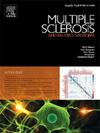Can serum C3/C4 complement ratio be used in the differential diagnosis of central nervous system demyelinating diseases?
IF 2.9
3区 医学
Q2 CLINICAL NEUROLOGY
引用次数: 0
Abstract
Background
Neuromyelitis Optica Spectrum Disorders (NMOSD) and Multiple Sclerosis (MS) are primary demyelinating diseases of the central nervous system (CNS) with similar clinical features, complicating early differential diagnosis and treatment decisions. While both humoral and cellular immunity contribute to their immunopathogenesis, the complement system's role remains unclear. We considered complement-dependent cytotoxicity might have different roles in the pathophysiology of these diseases. Predictive value of C3 and C4 complement levels at the first attack for the definitive diagnosis aimed to be investigated.
Methods
Treatment-naive, 14 seronegative (SN) NMO, 28 aquaporin-4-positive [AQP4(+)] NMO, 23 myelin oligodendrocyte glycoprotein antibody-associated disease (MOGAD), and 15 MS adult patients were included. Serum C3 and C4 levels were evaluated retrospectively. Complement levels were statistically adjusted according to the age of the patients and C3/C4 ratio was used to increase statistical power.
Results
We found that C4 levels were lower and C3/C4 ratio was higher in SN![]() NMO and AQP4(+)-NMO groups compared to the MS group. It has been determined that 5.32 and 4.85 cut-off values of the C3/C4 ratio can discriminate SN
NMO and AQP4(+)-NMO groups compared to the MS group. It has been determined that 5.32 and 4.85 cut-off values of the C3/C4 ratio can discriminate SN![]() NMO and AQP4(+)-NMO groups from MS.
NMO and AQP4(+)-NMO groups from MS.
Conclusion
The classical complement pathway in SN![]() NMO and AQP4(+)-NMO was thought to be more affected compared to MS, as activation of the classical pathway predominantly decreases the level of C4. Since the involvement of the complement system pathways at different levels may be presented with the C3/C4 ratio, it seems likely that this ratio may have value as a candidate biomarker in the differential diagnosis of primary CNS demyelinating diseases.
NMO and AQP4(+)-NMO was thought to be more affected compared to MS, as activation of the classical pathway predominantly decreases the level of C4. Since the involvement of the complement system pathways at different levels may be presented with the C3/C4 ratio, it seems likely that this ratio may have value as a candidate biomarker in the differential diagnosis of primary CNS demyelinating diseases.
求助全文
约1分钟内获得全文
求助全文
来源期刊

Multiple sclerosis and related disorders
CLINICAL NEUROLOGY-
CiteScore
5.80
自引率
20.00%
发文量
814
审稿时长
66 days
期刊介绍:
Multiple Sclerosis is an area of ever expanding research and escalating publications. Multiple Sclerosis and Related Disorders is a wide ranging international journal supported by key researchers from all neuroscience domains that focus on MS and associated disease of the central nervous system. The primary aim of this new journal is the rapid publication of high quality original research in the field. Important secondary aims will be timely updates and editorials on important scientific and clinical care advances, controversies in the field, and invited opinion articles from current thought leaders on topical issues. One section of the journal will focus on teaching, written to enhance the practice of community and academic neurologists involved in the care of MS patients. Summaries of key articles written for a lay audience will be provided as an on-line resource.
A team of four chief editors is supported by leading section editors who will commission and appraise original and review articles concerning: clinical neurology, neuroimaging, neuropathology, neuroepidemiology, therapeutics, genetics / transcriptomics, experimental models, neuroimmunology, biomarkers, neuropsychology, neurorehabilitation, measurement scales, teaching, neuroethics and lay communication.
 求助内容:
求助内容: 应助结果提醒方式:
应助结果提醒方式:


